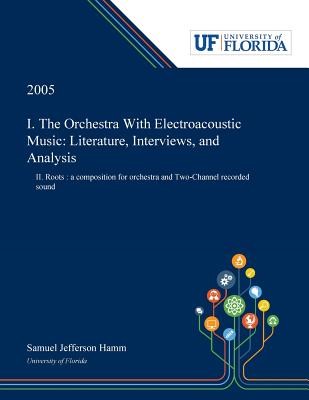
- We will send in 10–14 business days.
- Author: Samuel Hamm
- Publisher: Dissertation Discovery Company
- ISBN-10: 0530004801
- ISBN-13: 9780530004808
- Format: 21.6 x 27.9 x 1.3 cm, softcover
- Language: English
- SAVE -10% with code: EXTRA
Reviews
Description
Abstract:
Since its origins in the aristocratic European courts of the sixteenth and seventeenth centuries, the orchestra has held an eminent position in Western art music. Due to its sheer magnitude and its unparalleled sonic flexibility, skill in writing original and ambitious music for the orchestra is a common, if myopic, measure of the quality and relevance of a composer's output. The orchestra has maintained its esteem as the twenty-first century opens. Eighteen of the past twenty-five Pulitzer Prizes in Music have been awarded to orchestral compositions. But all is not well: cultural shifts and financial constraints are reducing both the size of audiences for orchestral art music and the number of viable ensembles. It is a complicated problem with many differing opinions as to its origins and solutions. By the end of the twentieth century, technological advancements provided new means of producing music. Developments in electronic instruments, recording technology, and computers have each been hailed as an impetus for future music. New genres of art music have emerged from these sources, known by varying terms: electroacoustic music, electronic music, computer music. In addition, technology has built new bridges between art music and popular music, leading to exchanges of ideas, techniques, and instrumentation. Interchange and interplay between the orchestral "old style" and the electroacoustic "new style" were inevitable during the twentieth century. New problems and questions emerged that were philosophical,aesthetic, and practical. What is the artistic validity of music that combines such different traditions and concepts? Is the ability to make an artistic statement enhanced or compromised? What logistical issues exist in arranging and producing performances of these works? There are many more questions, and they all remain pertinent in the present. Dissertation Discovery Company and University of Florida are dedicated to making scholarly works more discoverable and accessible throughout the world. This dissertation, "I. The Orchestra With Electroacoustic Music: Literature, Interviews, and Analysis" by Samuel Jefferson Hamm, was obtained from University of Florida and is being sold with permission from the author. A digital copy of this work may also be found in the university's institutional repository, IR@UF. The content of this dissertation has not been altered in any way. We have altered the formatting in order to facilitate the ease of printing and reading of the dissertation.
EXTRA 10 % discount with code: EXTRA
The promotion ends in 20d.08:50:17
The discount code is valid when purchasing from 10 €. Discounts do not stack.
- Author: Samuel Hamm
- Publisher: Dissertation Discovery Company
- ISBN-10: 0530004801
- ISBN-13: 9780530004808
- Format: 21.6 x 27.9 x 1.3 cm, softcover
- Language: English English
Abstract:
Since its origins in the aristocratic European courts of the sixteenth and seventeenth centuries, the orchestra has held an eminent position in Western art music. Due to its sheer magnitude and its unparalleled sonic flexibility, skill in writing original and ambitious music for the orchestra is a common, if myopic, measure of the quality and relevance of a composer's output. The orchestra has maintained its esteem as the twenty-first century opens. Eighteen of the past twenty-five Pulitzer Prizes in Music have been awarded to orchestral compositions. But all is not well: cultural shifts and financial constraints are reducing both the size of audiences for orchestral art music and the number of viable ensembles. It is a complicated problem with many differing opinions as to its origins and solutions. By the end of the twentieth century, technological advancements provided new means of producing music. Developments in electronic instruments, recording technology, and computers have each been hailed as an impetus for future music. New genres of art music have emerged from these sources, known by varying terms: electroacoustic music, electronic music, computer music. In addition, technology has built new bridges between art music and popular music, leading to exchanges of ideas, techniques, and instrumentation. Interchange and interplay between the orchestral "old style" and the electroacoustic "new style" were inevitable during the twentieth century. New problems and questions emerged that were philosophical,aesthetic, and practical. What is the artistic validity of music that combines such different traditions and concepts? Is the ability to make an artistic statement enhanced or compromised? What logistical issues exist in arranging and producing performances of these works? There are many more questions, and they all remain pertinent in the present. Dissertation Discovery Company and University of Florida are dedicated to making scholarly works more discoverable and accessible throughout the world. This dissertation, "I. The Orchestra With Electroacoustic Music: Literature, Interviews, and Analysis" by Samuel Jefferson Hamm, was obtained from University of Florida and is being sold with permission from the author. A digital copy of this work may also be found in the university's institutional repository, IR@UF. The content of this dissertation has not been altered in any way. We have altered the formatting in order to facilitate the ease of printing and reading of the dissertation.


Reviews